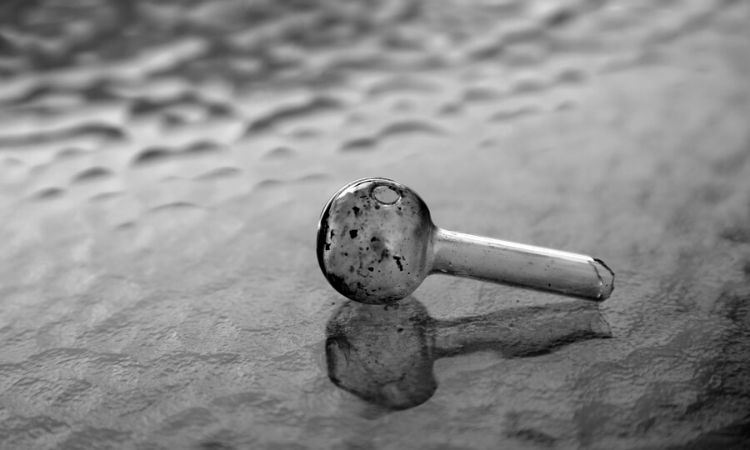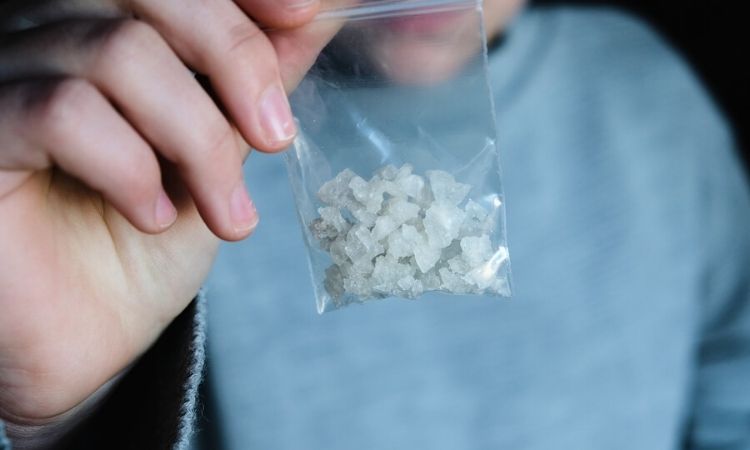
Methamphetamine (meth) is a stimulant similar to amphetamine that is most often found illicitly. Meth is usually more powerful than other amphetamines, however, and is very rarely used for any legitimate medical purpose. Because it is such a dangerous drug, it’s important to know how to tell if someone is on meth.
Meth is usually either purchased from a dealer on the street or “cooked” at home or in a clandestine lab. Street names for meth include crystal, ice, glass, and crank. It usually appears as a crystal or rock-like substance that is clear, semi-transparent, or bluish. Occasionally it is found in powdered or tablet form.
Signs of Meth Use
Regular meth use often leads to a myriad of changes in a person’s life that can be easy to identify if you know what signs and symptoms to look for.
Changes in Lifestyle
Meth users are often secretive and try to conceal their use. However, over time, it will likely become increasingly difficult to disguise their habit, as they continue to spend an increasing amount of time and money procuring and using the drug.
As meth use becomes a priority and central in a user’s life, they will begin to fail to attend to responsibilities at work and at home. For instance, expenses related to drug making, buying, or using may result in financial difficulties and a failure to pay bills. Also, binges may be followed by long periods of inactivity in which childcare and other critical responsibilities are ignored.
Mood Swings and Adverse Mental Changes
Like other stimulants, such as cocaine and Adderall, meth use causes the brain to release excessive amounts of dopamine, a neurotransmitter responsible for feelings of reward and well-being. With long-term meth use, the brain becomes less able to produce dopamine without the drug’s help. This effect can leave the user feeling depressed, anxious, and experiencing other negative feelings during periods of abstinence.
Chronic meth use can also result in paranoia, delusions, and even full-blown psychosis. Users may experience irrational fears and adverse psycho-emotional effects that continue long after meth use has ended—a condition known as PAWS. Highly unpleasant withdrawal symptoms are common among long-term meth abusers when they try to quit using or cut back.
Behavioral Changes
Because meth is a potent CNS stimulant, the increase in activity in both the brain and body leads to feelings of euphoria. It also creates a boost in mood and energy. Users are often extremely talkative and hyperactive and may compulsively engage in obsessive and repetitive activities, such as cleaning.
Meth users may also experience strange tactile sensations or hallucinations that cause itching or the feeling of bugs crawling on or under their skin. This can lead to repeated scratching and the development of sores.
What’s more, chronic meth use often results in appetite suppression, and thus, noticeable weight loss. Over time, users begin to appear malnourished and gaunt as a result of poor eating and sleeping habits.

Physical Signs
Signs of meth use include itching, sores, weight loss, and a generally ill appearance. In addition, long-term meth users also encounter dental problems commonly known as “meth mouth”. This condition comes from a loss of tooth enamel due to poor oral hygiene and chronic dry mouth, leading to rampant tooth decay.
Depending on the way it is use, meth can have different effects on a user’s outward appearance. For instance, a person who smokes meth face a higher risk of bronchitis and pneumonia and may suffer from chronic coughing and congestion. And snorting meth, similar to snorting cocaine, can result in frequent nosebleeds and irreversible damage to the septum and surrounding nasal tissues.
Finally, injecting meth, although relatively uncommon, can lead to open wounds and sores on the skin, infections, and vein damage.
Meth Paraphernalia
Paraphernalia using for ingesting meth may include any of the following:
- Razors, mirrors, rolled paper, or hollow tubes for snorting
- Glass or metal pipes, bongs, foils, or light bulbs with a hollow tube attached for smoking
- Spoons, lighters, syringes, and surgical tubing or tourniquets for injection
Signs of a Meth Lab
Not all meth users cook their own meth. However, the following signs may indicate someone you know is operating a meth lab in their home:
- Excessive and threatening home security measures such as “Beware of Dog” or “Private Property” signs, alarm systems, etc.
- Items for concealing the home such as blackened windows, drawn curtains, high fences, etc.
- Chemical smells that are detectable around the home, garage, or yard
- Garbage contains suspicious bottles, containers, or sheets stained from filtering chemicals
- Evidence of dumping chemical waste, such as in burn pits
Treatment For Meth Abuse And Addiction
Meth addiction occurs when a user’s body has developed a dependence on the substance, and unpleasant side effects onset when the user tries to quit. When a user has become dependent, they will continue to engage in compulsive drug-seeking behavior. They will do whatever it takes to obtain and use meth despite the adverse consequences that result.
Treatment for meth use should include medical detox, followed by participation in multiple therapeutic services, such as psychotherapy, counseling, and group support. Recovery By The Sea is a specialized treatment center that offers care and support for meth users and others who suffer from drug dependence and addiction.
If you believe that a loved one is abusing meth, other drugs, or alcohol, we urge you to contact us today to discover how we can help!